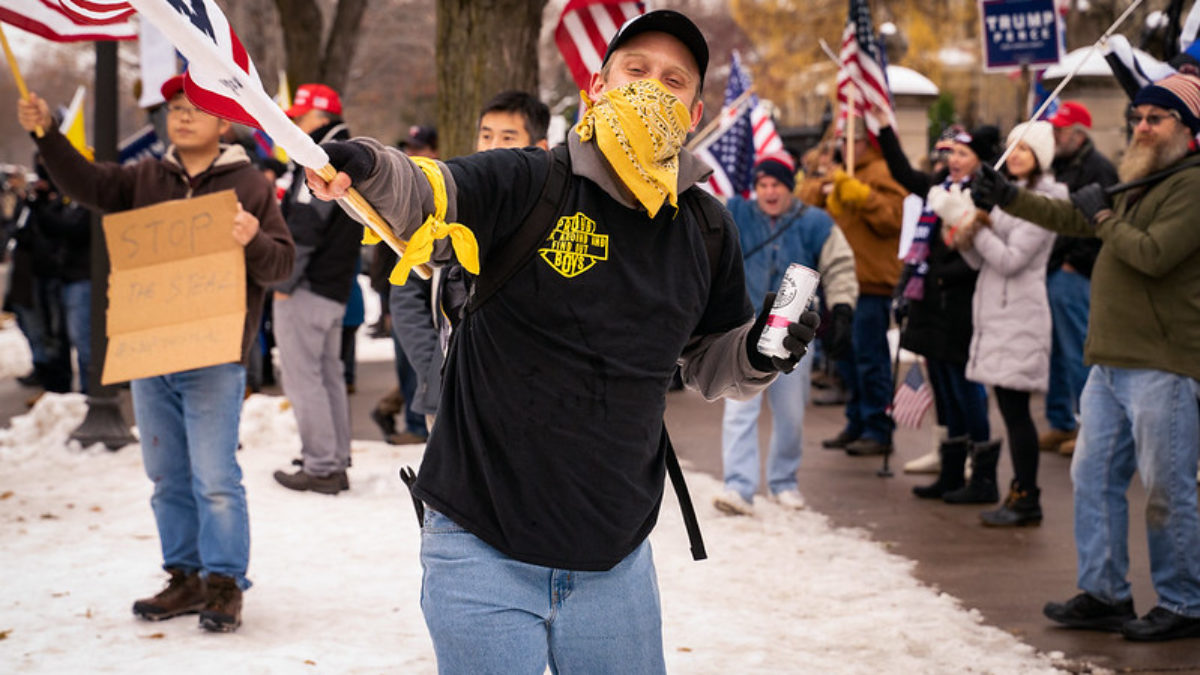The Secret Service knew the Proud Boys posed a threat on Jan. 6. Why didn’t they take it seriously?

In the days before the January 6 insurrection, the Secret Service minimized the serious threat to the Capitol, elected officials and the certification of the 2020 election posed by the Proud Boys.
An internal memo obtained by CREW through a Freedom of Information Act lawsuit describes multiple demonstrations happening in Washington D.C. on and around January 6. Here is how the Secret Service described the group and their planned activities:

Far from highlighting a coordinated extremist group that had publicly supported Donald Trump’s desire to overturn the election and had been rallying supporters to fight for the then-president in DC, this lukewarm description included in the middle of the memo made it seem as though there wasn’t much to worry about.
Here’s what a more accurate description could have included, based on public reporting and information reported by the January 6th Select Committee:
The Proud Boys have a long documented history of violence and extremism. When Donald Trump infamously told Proud Boys to “stand back and stand by” during a 2020 election debate, then-chairman of the Proud Boys, Enrique Tarrio, responded “Standing by sir” in a Parler post, setting the tone for how the group would eventually engage in violence and extremism on Trump’s behalf. In a November 2 video, Proud Boys leader Joseph Biggs told viewers, “If you think Biden’s gonna fuckin win, you’re fuckin r*****. And if he somehow does win…there’s going to be hell to pay because Biden doesn’t have these kinds of people showing up.”
On December 11 and 12, 2020, less than a month before the January 6 insurrection, the Proud Boys came to D.C. to support Trump’s claim of a stolen election—their largest gathering yet in the city—that included countless instances of civil disobedience including assaulting bystanders, the vandalism of four churches and the burning of a Black Lives Matter sign. The Secret Service concludes that the Proud Boys’ “demonstrations have concluded without arrests” in their summary, failing to mention that the December demonstrations resulted in 39 arrests following skirmishes between Proud Boys and counter protesters. In summer 2021, Tarrio would plead guilty to burning the Black Lives Matter sign and be sentenced to five months in jail.
Other signs of violence had been present too: a November 2020 blog post by Biggs titled “The Second Civil War Is More Realistic Than You Think” encouraged individuals to “Buy ammo, clean your guns, get storable food and water.” In December, he let members know that Proud Boys would go to DC “incognito,” one of the few details included in the Secret Service’s description.
When it came to other groups—particularly counter protestors—the Secret Service was much more detailed and apparently, concerned. A description of the Fred Hampton Gun Club and Not Fucking Around Coalition, the latter a Black militia group, includes details about the requirements of tactical gear and bullet proof vests, and notes that NFAC is “of record” with the service following a heavily armed protest in Louisville in 2020.

One person who flagged the dangers Trump and his supporters could pose was Mike Pence’s chief of staff, Marc Short. Short specifically warned the Secret Service that the president would publicly turn against Pence and put him in danger the day before the insurrection. There is no indication in the records CREW received that this tip was included in any updates to the Secret Service’s assessments of the Proud Boys and other pro-Trump groups. The Proud Boys stood by, as Trump instructed them to, and led an attack that nearly led to the assassination of the Vice President.
This example is not the first instance of the Secret Service downplaying the threats posed by Trump and his supporters on January 6, but it is perhaps the most egregious. The Proud Boys posed a serious threat based on public information alone, and certainly warranted more scrutiny and investigation of their specific plans. The Secret Service, once again, came up short.
Photo courtesy of Chad Davis via Creative Commons license.